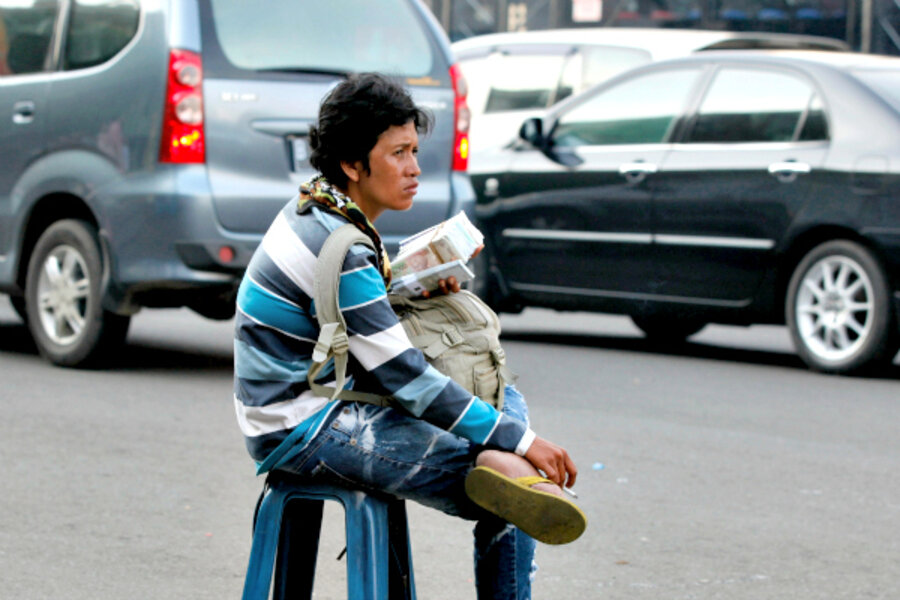Bank Andara, a bank for banks in Indonesia, grows micro businesses – and turns a profit
With reporting by Emily Youatt
Indonesia has millions of micro-entrepreneurs and thousands of microfinance institutions. But because most institutions lack enough capital and established systems they can only provide bare-bones services to small client bases. Without better services, the country’s homegrown employers will stay micro forever.
What these microfinance institutions needed was a bank of their own to provide capital, technology-based banking solutions, and new, tailored financial services. In April 2013, Bank Andara celebrated its fourth anniversary doing just that, with more than a six-fold increase in assets since its inception, having partnered with 737 microfinance institutions reaching nearly 1.2 million low-income clients.
“By offering a ‘one stop’ commercial partnership with small, independent microfinance institutions, Bank Andara provides access to financing, capacity building, technology, and management information systems so that they, in turn, can provide their customers with vital services and products that typically only commercial banks can provide,” said David Yong, CEO of Bank Andara.
“Ultimately, this allows small banks to help their customers build their livelihoods and reduce the risk of poverty.”
The wholesale commercial bank is exclusively dedicated to serving the Indonesian microfinance sector, and was founded by Mercy Corps and the International Finance Corporation (IFC) with support from the Bill and Melinda Gates Foundation, KfW, Stichting Hivos-Triodos Fonds, and a local individual, Mr. I Wayan Gatha, which collectively represent the bank's shareholders.
In the archipelago, 56.5 million Indonesians are self-employed through micro and small businesses, but 79 percent do not have access to any type of formal financial services. And most Indonesians living on less than $2 a day are considered too risky for loans or live in locations too remote for formal financial services.
Since its founding, Bank Andara has addressed the key flaws of the fractured Indonesian microfinance sector: lack of access to sufficient capital, small average loan size, lack of collateral, regulatory hurdles, and the perception that financing microfinance institutions is a high risk.
Take Taufik Hidayat, for example, a client of a small microfinance institution, who was able to take out a seasonal loan to start a beekeeping business when his recycling business was devastated after market prices dropped.
Thanks to Bank Andara’s partnership with a microfinance institution near his village, Hidayat took out a seasonal loan with a flexible repayment plan, unique to Bank Andara, of IDR 5 million ($581) to adapt to the change and kick started his beekeeping endeavor.
Starting with three bee boxes, he collected and sold the honey door to door himself. Over the first six months of the loan, he increased his business to 18 bee boxes and employed three workers. During good months, Hidayat can make Rp. 240,000 (about $24) a day selling his honey, and the flexible repayment plan helps smooth out his finances through rainy months when the bees aren't producing.
In 2011, Bank Andara launched the world's first mobile-enabled microfinance payment services platform, called AndaraLink. Based on Visa’s Fundamo platform, nearly 400 microfinance institutions are now on the network. The platform lets them serve their clients with international and domestic remittances, cash-to-cash services, monthly bill payments, and a pick-up service named “Solusi Setoran” that picks up payments directly from customers of microfinance institutions partners.
As Bank Andara widens its lending pool to more microfinance institutions, and as mobile-based services like AndaraLink become more commonplace, millions more micro and small business owners like Hidayat can get the banking services they need to grow – huge news for those considered too remote and too risky for commercial banks.
After four years of operations the bank has turned a profit, a trend expected to continue as it expands its lending portfolio. By December 2012, Bank Andara reported more than a six-fold increase in total assets since its establishment in 2009: IDR 1.2 trillion.
Creating this multiplier effect by working through existing microfinance institutions requires carefully structuring its lending products. It controls risk through the use of highly honed due diligence and strong relationships with its partner microfinance institutions, ratings, and guarantees. Because Bank Andara shareholders have invested in the wholesale bank together, they share the financial risk and, as a team, provide a strong network of advisory services and support.
To further finance Bank Andara’s wholesale microfinance lending, Indonesia's Bank Ekonomi provided a loan of IDR 50 billion (about $5.05 million) in June 2012. And in October 2013, Citibank Indonesia and the Overseas Private Investment Corporation (OPIC) announced the disbursement of a $18.5 million term loan.
Since its first loan to a microfinance institution partner in 2009, Bank Andara has partnered with microfinance institutions in 18 provinces. It opened its third and fourth branch offices in Central Java and East Java this past February 2012.
As the Bank continues to expand its lending portfolio, millions more Indonesians will be able to build businesses out of poverty.
This article originally appeared at Global Envision, a blog published by Mercy Corps.





